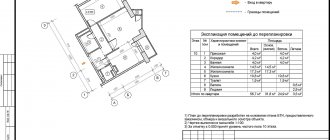The State Real Estate Cadastre is a national information database that contains information about real estate objects on the territory of the Russian Federation. In this case, objects in settlements of any type, in all subjects, regardless of the form of ownership, size, or purpose are taken into account. The State Real Estate Cadastre also contains:
- Information about the passage of the state border of the Russian Federation;
- Information about the passage of borders between all subjects of the Russian Federation;
- Information about the boundaries of settlements.
The main task performed by this information resource is collecting information about real estate objects, as well as organizing records of property rights that are registered in the Unified State Register. Thus, the Moscow real estate cadastre provides information through Rosreestr in the form of certificates, extracts, and passports.
Who maintains cadastral records and how?
According to the Federal Law, the main authorized person whose responsibilities include the tasks of maintaining cadastral records is called a “cadastral engineer.” It is this employee who checks incoming information, fills out requests, accepts received documents from applicants, makes changes to the State Tax Code, and prepares documents for making a decision on entering information into the State Property Committee.
Cadastral numbers are assigned automatically, by a software module in which the location of the object is tracked and the corresponding uniqueizer is issued. By order of the Ministry of Economic Development, cadastral numbers are assigned using a single input mask - OO:RR:KKKKKK:NN, where:
- OO - District;
- RR – District;
- KKKKKK - Quarter;
- NN – Site number.
A feature of numbering is the entry of cadastral numbers in ascending order, according to applications from individuals or legal entities, as well as state registration authorities.
The operating regulations of the state real estate cadastre and the real estate registration center are determined by the following documents:
- Constitution of the Russian Federation;
- Codes - Civil Code, Tax Code, Land Code, VK, LK, Town Planning Code, Housing Code;
- Law “On the State Real Estate Cadastre”.
The departmental institution (legal entity) that carries out accounting is called the Federal State Budgetary Institution “FKP Rosreestr”. It is noteworthy that in cases where your interests are infringed, you have claims against the state registrar, you can file a claim in which Rosreestr will be the defendant. The most common reasons for going to court are:
- Disagreement with the refusal to register in the cadastral register;
- Revision of cadastral value;
- Loss of documents;
- Delaying the registration procedure, issuing certificates or extracts;
- Inconsistency between the actual and entered information in the State Property Committee;
- Refusal to terminate the existence of a property.
Despite the fact that data is continuously entered into a single cadastre, cases of loss of relevance of information or situations with objects for which there are no records often arise. This happens due to the fact that after 1999 there were no transactions with specific real estate, therefore, there are no records in Rosreestr. Deletion or destruction of archival data, outdated information or any parts of documents is not provided for by law.
Basic principles of the real estate cadastre:
- Single base - all subjects of the Russian Federation work through one base, therefore, work is carried out through a single software and through common support servers;
- Non-stop work - Rosreestr support works around the clock, servers are available for internal use continuously.
- Availability for citizens - services provided by Rosreestr allow citizens to receive publicly available information, except in cases provided for by law and work with state secrets;
- Reliability - all information is carefully checked before being entered into the State Property Committee, the entered information is stored in databases, even if the periods specified in the contracts expire, geodetic or cartographic data change;
- Openness of data - any citizen can request information of interest within the established procedure, not only at the territorial office of Rosreestr, but also when submitting a request via the Internet.
- Backup duplication - in addition to backup to digital media, information from the State Property Committee is also transferred to paper media (there is a provision about this in the Law “On the Real Estate Cadastre”).
- Permanence - the law provides for a long-term program and the building of a unified cadastral registration system that will work for the next 30-50 years. Consequently, the entered data will not be deleted, and the standards for submitting information about real estate cannot be radically changed.
- Compilations - information from the State Cadastre must be combined and supplement information from other sources of the state apparatus.
Basic provisions of the state real estate cadastre
Information about real estate includes the unique characteristics of the property, as well as additional information about it. The purpose of collecting such information is confirmation:
— the existence of a real estate object with individual characteristics;
- termination of the existence of the property.
2.1.2 The purpose and objectives of the creation, functions of the state real estate cadastre
The purpose of creating the State Property Committee is to ensure civil circulation of real estate.
The objectives of the creation of the State Control Committee are:
— ensuring guarantees of the rights of owners;
— ensuring effective collection of property taxes;
— efficient and rational use of real estate.
Main functions of the State Control Committee:
— accounting (state cadastral registration of real estate for the purpose of registering rights to them);
— fiscal (formation of the tax base based on determining the cadastral value of real estate by conducting a mass state cadastral valuation for tax purposes);
— information (information support for citizens, the business community, government bodies and management of reliable and legally significant information about real estate, their legal status and cadastral value).
Main provisions of the State Code of Ukraine
1. State cadastral registration of a property is a legal act of recognition and confirmation by the state of the existence of a property and its individualization as an object of law and taxation.
2. Information from the state real estate cadastre is of a legal nature.
3. Entries in the state register of real estate are the only evidence of the existence of a real estate object within its boundaries, understood as the spatial limits of the validity of rights, as well as the established public legal regime for its use and the composition of its property.
2.1.3 Place of the State Property Committee in the real estate regulation system
The State Property Committee is associated with the registration of rights to real estate:
— a unified state registration of rights is formed on the basis of information from the State Property Committee;
— responsibilities between the authorities for registering rights and maintaining the real estate cadastre are delineated;
— in the future, the information resources of the State Property Committee and the unified state registration of rights will be integrated;
— to register a transaction with an already registered property, re-registration is not required if the property has not undergone any changes.
The State Tax Code is related to taxation:
— The State Tax Committee is a source of information on the taxable base and tax rate of taxable objects;
— the real estate cadastre is one of the main sources of information for conducting cadastral valuation of real estate;
— the cadastral value of objects obtained as a result of the assessment is recorded in the real estate cadastre;
| Real estate accounting |
| Real estate taxation |
| State forecasting and planning |
| Natural resource management |
| Registration of rights to real estate |
Figure 2.1 – Place of the State Property Committee in the real estate regulation system
— publicity of real estate cadastre information allows copyright holders to verify the correctness of tax assessments;
— based on cadastral valuation databases, a basis is created for the transition in the future to taxation in accordance with market valuation.
GKN is associated with sectoral accounting of natural resources:
— cadastral registration of real estate and sectoral registration of natural resources for the purposes of their management are carried out on a unified spatial basis, which will allow integrating information about the territory;
— the hierarchical scheme of the real estate cadastre allows you to obtain detailed or generalized information on the Russian Federation, constituent entities of the Russian Federation, municipalities, cadastral quarters at any level of management;
— information connection of the real estate cadastre with other industry cadastres will contribute to the accuracy of their maintenance;
— in the future, the task of information integration of the real estate cadastre and industry cadastral systems is set.
GKN is associated with state forecasting and planning:
— information support for authorities;
— efficiency of access to cadastral data and their compatibility with other state information resources will allow monitoring the condition of real estate and predicting the development of various processes;
— the real estate cadastre will allow you to control strategically important elements of the country’s infrastructure (energy, transport communications, communications, fuel complex) and protect them legally.
2.1.4 Procedure for accounting and registration of land plots and capital construction projects before the Law on the State Property Committee comes into force
The whole inconvenience of the recently existing system is that since 1991, real estate accounting was carried out by two departments: the Federal Real Estate Cadastre Agency and the Bureau of Technical Inventory represented by technical inventory authorities. Owners and applicants for property spent a lot of time collecting various certificates and long queues, and then could be refused registration of rights to real estate. The reason for this was the inconsistency and inconsistency of information from the two above-mentioned accounting departments.
The decision on the need to create a unified real estate cadastre was made in 1998. It was then that the Law on State Registration of Real Estate Rights came into force. And a problem immediately arose: it was necessary to carry out accounting and register the real estate objects themselves, and then begin to register the rights to them.
Before the adoption of the cadastre law, land and the objects located on it were recorded separately. Land plots were described in the land cadastre, and buildings and structures - in the OTI registers.
To register ownership of a property, citizens had to go around in circles to numerous authorities and shell out considerable sums at each one. The average period for registering real estate could be four months or more.
2.1.5 Real estate accounting and registration system after the Law on the State Property Committee came into force
Conventionally, registration and registration procedures in relation to real estate can be divided into two components: non-state services and government services (Figure 2.3).
On March 1, 2008, the law “On the State Real Estate Cadastre” came into force, uniting land and capital construction projects into a single cadastre.
Now, to unify accounting, when registering rights, information about the land plot and the buildings or structures that are located on it is collected together.
The most important change is precisely the unification of systems for recording information about land and real estate. With the correct implementation of the law, information will be taken into account in a single register, and cases of inconsistency in data on real estate objects should come to naught. Also, thanks to the new register, in the coming years the number and time of legal disputes between land owners and capital construction projects should be reduced - it is known that many of them last for several years.
| Non-state part Formation of real estate objects Carried out by business entities operating in the market in a competitive environment |
| State part State cadastral registration State cadastral valuation of real estate State registration of rights Carried out by Rosreestr bodies as a mandatory state function |
Figure 2.3 – Separation of procedures in the field of formation, accounting and valuation of real estate
Now cadastral engineers are engaged in the formation of real estate objects, and only the cadastral registration authority will be in charge of their identification and location. The procedure for registering rights to real estate as a single object, including not only buildings, but also land, has been significantly simplified. When a site or building is formed or, conversely, ceases to exist, as well as when its unique characteristics change, the information is entered into one comprehensive cadastre. Among other things, the real estate cadastre is the basis for formulating a policy on the taxation of buildings and land.
Completion of the state cadastre of real estate is planned for 2014.
It is expected that the introduction of a unified real estate cadastre will simplify and reduce the cost of the procedure for state registration of rights to real estate and increase the revenue of the corresponding taxes to the budget.
New rules for recording land plots have been in effect since January 1, 2008, for buildings and structures - since January 1, 2013 (Figure 2.4).
Figure 2.4 – Scheme of the accounting and registration system in the State Property Committee (after 01/01/2013)
Since 2012, the cadastre system should operate on the principle of self-sufficiency, i.e. bring income to the state. The recoupment of cadastral registration will be carried out through payment, and the payment is affordable. This is quite realistic; we can give the example of Sweden, where revenues from operating the cadastral system are approximately 10 times higher than the costs of its maintenance. Moreover, citizens pay little money for providing information - 1.5-2 dollars. Profit is obtained due to the large amount of information provided and the low cost of the process.
Types of information provided by the state real estate cadastre, indicating the amount of fees for them, established in 2011 by order of the Ministry of Economic Development of the Russian Federation dated July 30, 2010 N 343 “On the procedure for collecting and returning fees for providing information included in the state real estate cadastre, and the amounts such a fee” are given in Table 2.1.
Table 2.1 - Fees for providing information included in the state real estate cadastre
| Form of presentation | Payer | Document type | |
| A copy of the document on the basis of which information about the property was entered into the state real estate cadastre, rub. for 1 copy | Cadastre extract of the property, (KV) rub. for 1 copy | Cadastre passport of the real estate object, (CP) rub. for 1 copy | Cadastre plan of the territory, (CPT) rub. for 1 copy |
| boundary plan, technical plan | other documents | ||
| In the form of a paper document | for state authorities and local self-government | ||
| for individuals | |||
| for legal entities | |||
| In the form of an electronic document | for state authorities and local self-government | ||
| for individuals | |||
| for legal entities |
Basic provisions of the Federal Law of July 24, 2007 No. 221-FZ “On the State Real Estate Cadastre” and other legislative and regulatory acts of the Russian Federation in the field of cadastral relations
2.2.1 Entry into force of the Federal Law of July 24, 2007 No. 221-FZ “On the State Real Estate Cadastre”
In relation to buildings, structures, premises, objects of unfinished construction:
— until 01/01/2013 state registration and preparation of documents required for state administration are carried out by the bodies for state technical registration and technical inventory in the manner established before 03/01/2008. Moreover, from 03/01/08 they issue cadastral passports of real estate objects;
— from 01/01/2013 to 01/01/2014 cadastral activities are carried out both by bodies for state technical accounting and technical inventory, and by cadastral engineers;
— from 01/01/2014 Cadastral activities are carried out only by cadastral engineers.
Regarding land plots:
- from 01.03.0 State cadastral registration is carried out in full compliance with the Federal Law “On the State Property Committee”.
— from 03/01/08 to 01/01/2011 . cadastral activities in relation to land plots could be carried out by both cadastral engineers and persons who, as of 03/01/08, had the right to carry out work on territorial land management.
— from 01/01/2011 Cadastral activities in relation to land plots can only be carried out by cadastral engineers.
2.2.2 Principles of maintaining the State Control Committee:
1. Unity of technology throughout the Russian Federation.
2. Public availability of information from the State Tax Committee.
3. Continuous updating of information contained in the State Property Committee.
4. Comparability of cadastral information with information contained in other state information resources.
5. Priority of paper media of the State Tax Code over electronic media in case of discrepancy between the information.
6. Permanent storage of State Property Committee documents, previously entered cadastral information, and changed information.
7. The declarative principle of entering information into the State Tax Committee on the basis of documents received by the CMO.
8. Availability of information that is temporary and used only for the purposes of state registration of rights.
9. The constant relevance of the information contained in the State Property Committee until changes are made to them or the object is removed from cadastral registration.
2.2.3 Cadastral division and assignment of cadastral numbers
State cadastral registration of real estate is accompanied by the assignment of a cadastral number to the object in the manner established by order of the Ministry of Economic Development of Russia dated April 4, 2011 N144.
A cadastral number is an unchangeable, non-repeating state registration number over time and on the territory of the Russian Federation.
Cadastral numbers are assigned to real estate objects by the cadastral registration authority for each real estate object, information about which is entered into the state real estate cadastre.
In order to assign cadastral numbers to real estate objects, a cadastral division of the territory of the Russian Federation was carried out.
Basic requirements for cadastral division:
— establishment and change of cadastral division units is carried out by Rosreestr;
- changing the description of the location of borders between constituent entities of the Russian Federation, the boundaries of municipalities and populated areas, as well as the cessation of existence, the formation of new ones, and changes in constituent entities of the Russian Federation, municipalities and populated areas does not entail a change in cadastral division;
— cadastral division established before June 30, 2011 (the date of entry into force of the order of the Ministry of Economic Development of Russia dated April 4, 2011 N144) continues to be used for the purpose of assigning cadastral numbers to real estate objects and is valid until it is changed;
— units of each level of cadastral division must cover the corresponding territory without overlaps or breaks;
— each cadastral division unit is formed by a single closed contour (single polygon);
— each cadastral division unit is assigned a unique accounting number. The maximum number of characters in the registration and serial numbers of cadastral division units is not limited. In addition to a unique registration number, cadastral districts and cadastral areas are assigned a name;
— in the event of the termination of the existence of a cadastral division unit, the accounting number assigned to the corresponding cadastral division unit is not reused;
— the location of the boundaries of cadastral division units is established according to the coordinates of the characteristic points of the boundaries, determined in the coordinate system used for maintaining the State Property Committee on the corresponding territory;
- the location of individual parts of the boundaries of cadastral division units located between two characteristic points can be established by indicating natural objects and (or) objects of artificial origin;
- parts of the boundaries of cadastral division units that are common simultaneously to cadastral districts, cadastral districts and cadastral quarters have the same description of the location of the boundaries (including the coordinates of the characteristic points of the boundaries);
— the accuracy of determining the coordinates of characteristic points of the boundaries of cadastral division units corresponds to the accuracy of the duty cadastral map used for maintaining the State Property Committee.
Cadastral division means fixing the boundaries of the following cadastral division units:
— cadastral districts;
— cadastral areas;
— cadastral quarters;
Cadastral districts are the division of the entire territory of the Russian Federation, the territory of the constituent entities of the Russian Federation, internal waters and the territorial sea. In accordance with the order of Roszemkadastr dated May 14, 2001. No. P/89, 90 cadastral districts were created (including one “All-Russian”) and a scheme for their relative location was approved. Each cadastral district is assigned a unique registration number and name, for example, “Krasnodar cadastral district” has the number “23”.
Cadastral districts are a division of a cadastral district. The water area of internal waters and the territorial sea can form a cadastral area. In accordance with the order of the Regional Committee dated May 16, 2001. No. 39-P (as amended by order No. 90-P dated July 3, 2001), 54 cadastral districts were created on the territory of the Krasnodar cadastral district (including the “General Krasnodar Region”, which, in accordance with the order of the Ministry of Economic Development No. 144, should be renamed “Conditional”, “ Black Sea Sea" and "Azov Sea"), their numbers and names, as well as a diagram of their relative location, were approved. Each cadastral district is assigned a unique registration number, consisting of the registration number of the cadastral district, a separator in the form of a colon and the serial number of the district in the district, for example, the cadastral district “city of Krasnodar” has the number “23:43”. The cadastral division of the Russian Federation and the Krasnodar Territory is given in tables 2.2 – 2.3.
Cadastral quarters (which are the smallest unit of cadastral division) are the division of a cadastral district. They are usually installed along the boundaries of settlements, building blocks, land plots, artificial objects, etc. A unique accounting number is assigned, consisting of the registration number of the cadastral region, a separator in the form of a colon and the serial number of the block in the cadastral region, for example, 23:43:0116259.
To record real estate located in more than one cadastral district, one cadastral district “All-Russian” is created with the number “0”, the border of which runs along the state border of the Russian Federation. In the “All-Russian” cadastral district, one “Conditional” cadastral district with the number “0:0” and one cadastral quarter with the number “0:0:0” are created, the boundaries of which (both the district and the quarter) coincide with the boundaries of the “All-Russian” cadastral district (Figure 2.5).
Figure 2.5 – Formation of a cadastral number in a conditional cadastral district, cadastral district and cadastral quarter
Table 2.2 – Cadastral division of the Russian Federation
| Cadastral district number | Name of cadastral district | Cadastral district number | Name of cadastral district |
| Adyghe | Kursk | ||
| Bashkir | Leningradsky | ||
| Buryat | Lipetsky | ||
| Altai Republican | Magadan | ||
| Dagestan | Moscow regional | ||
| Ingush | Murmansk | ||
| Kabardino - Balkar | Nizhny Novgorod | ||
| Kalmyk | Novgorod | ||
| Karachaevo - Cherkessk | Novosibirsk | ||
| Karelian | Omsk | ||
| Komi | Orenburgsky | ||
| Mari | Orlovsky | ||
| Mordovian | Penza | ||
| Yakut | Permian | ||
| North Ossetian | Pskovsky | ||
| Tatar | Rostovsky | ||
| Tuvinian | Ryazansky | ||
| Udmurt | Samara | ||
| Khakassian | Saratovsky | ||
| Chechen | Sakhalin | ||
| Chuvash | Sverdlovsky | ||
| Altai Territory | Smolensky | ||
| Krasnodar | Tambovsky | ||
| Krasnoyarsk | Tverskaya | ||
| Seaside | Tomsk | ||
| Stavropol | Tula | ||
| Khabarovsk | Tyumen | ||
| Amursky | Ulyanovsky | ||
| Arkhangelsk | Chelyabinsk | ||
| Astrakhan | Chitinsky | ||
| Belgorodsky | Yaroslavsky | ||
| Bryansk | Moscow City | ||
| Vladimirsky | Petersburg | ||
| Volgogradsky | Jewish | ||
| Vologda | Aginsky | ||
| Voronezh | Komi - Permyatsky | ||
| Ivanovsky | Koryak | ||
| Irkutsk | Nenets |
End of table 2.2
| Kaliningradsky | Taimyr |
| Kaluzhsky | Ust-Ordynsky |
| Kamchatsky | Khanty-Mansiysk |
| Kemerovo | Chukotka |
| Kirovsky | Evenki |
| Kostroma | Yamalo - Nenets |
| Kurgan | All-Russian |
Table 2.3 – Cadastral division of the Krasnodar Territory
| Cadastral region number | Name of cadastral region | Cadastral region number | Name of cadastral region |
| 23:00 | All-regional Krasnodar | 23:27 | Slavic |
| 23:01 | Abinsky | 23:28 | Starominsky |
| 23:02 | Apsheronsky | 23:29 | Tbilisi |
| 23:03 | Beloglinsky | 23:30 | Temryuksky |
| 23:04 | Bryukhovetsky | 23:31 | Timashevsky |
| 23:05 | Vyselkovsky | 23:32 | Tikhoretsky |
| 23:06 | Gulkevichsky | 23:33 | Tuapse |
| 23:07 | Dinskaya | 23:34 | Uspensky |
| 23:08 | Yeisk | 23:35 | Ust-Labinsky |
| 23:09 | Caucasian | 23:36 | Shcherbinovsky |
| 23:10 | Kalininsky | 23:37 | resort town of Anapa |
| 23:11 | Kanevsky | 23:38 | Armavir city |
| 23:12 | Korenovsky | 23:39 | Belorechensk city |
| 23:13 | Krasnoarmeisky | 23:40 | Gelendzhik city |
| 23:14 | Krylovsky | 23:41 | Goryachy Klyuch city |
| 23:15 | Crimean | 23:42 | Yeysk city |
| 23:16 | Kurganinsky | 23:43 | Krasnodar city |
| 23:17 | Kushchevsky | 23:44 | city of Kropotkin |
| 23:18 | Labinsky | 23:45 | Krymsk city |
| 23:19 | Leningradsky | 23:46 | Labinsk city |
| 23:20 | Mostovsky | 23:47 | Novorossiysk city |
| 23:21 | Novokubansky | 23:48 | city of Slavyansk-on-Kuban |
| 23:22 | Novopokrovsky | 23:49 | Sochi city |
| 23:23 | Otradnensky | 23:50 | Tikhoretsk city |
| 23:24 | Pavlovsky | 23:51 | Tuapse city |
| 23:25 | Primorsko-Akhtarsky | 23:52 | Black Sea Marine |
| 23:26 | Seversky | 23:53 | Azov sea |
If a property is located simultaneously on the territory of several cadastral districts, a cadastral number is assigned to such an object in the cadastral quarter with the registration number “0:0:0”, the boundaries of which coincide with the boundaries of the All-Russian cadastral district.
For example, for an object located on the territory of two or more cadastral districts, the cadastral number is 0:0:0:56 (Figure 2.6).
Figure 2.6 – Examples of the formation of cadastral numbers using conventional units of cadastral division
To account for real estate located in more than one cadastral district, one “Conditional” cadastral district with the number “0” is created in each cadastral district (in the Krasnodar Territory this will be 23:0) and one cadastral quarter with the number “0”, the boundaries of which coincide with the boundaries of the cadastral district (Figure 2.5).
If a property is located simultaneously on the territory of several cadastral districts of one cadastral district, a cadastral number is assigned to such an object in the cadastral quarter with the serial number “0” (in the “Conditional” cadastral district, the boundaries of which coincide with the boundaries of the cadastral district).
For example, for an object located on the territory of two or more cadastral districts of the Krasnodar cadastral district, the cadastral number is 23:0:0:29 (Figure 2.6).
To account for real estate located in more than one cadastral block, one cadastral block with the number “0” is created in each cadastral district (for example, for Krasnodar 23:43:0). The border of a conventional cadastral quarter runs along the border of the cadastral district (Figure 2.5).
If a property is located simultaneously on the territory of several cadastral blocks of one cadastral district, the cadastral number for such an object is assigned in a cadastral block with the serial number “0”, the boundaries of which coincide with the boundaries of the cadastral district.
For example, for an object located on the territory of two or more cadastral blocks of the cadastral block of the city of Krasnodar, cadastral number 23:43:0:18 (Figure 2.6).
A cadastral number is assigned by the CMO to each property:
1) upon registration with the state cadastral register;
2) when information about a previously registered object is included in the Register of Real Estate Objects.
A cadastral number is assigned to a property in the cadastral quarter within the boundaries of which such an object is located entirely. An example of the formation of a cadastral number for a property in Krasnodar is shown in Figure 2.7.
Figure 2.7 – Example of generating a cadastral number for a property in Krasnodar
In the event of deregistration of a real estate property from the state cadastral register or in the event of cancellation and exclusion from the Unified State Register of information about a real estate object, it is not permitted to reuse the cadastral number of such a real estate object in order to assign the specified number to other real estate objects.
The cadastral number assigned to the property does not change, including due to changes in cadastral division.
The cadastral number of an object consists of the registration number of the cadastral quarter in which such a property is located and the serial number of the object in this quarter, separated by a colon.
All capital construction projects, which were registered in the Unified State Register of Regional Registers before 01/01/2012, have had their cadastral number changed for this structure since January 1, 2012, when information is included in the AIS GKN (module “State accounting of OKS”).
2.2.4 Cartographic basis of the GKN.
The cartographic basis of the state real estate cadastre is created for the purpose of compiling and maintaining cadastral maps, as well as providing information included in the state real estate cadastre.
The cartographic basis of the cadastre is:
1) maps (plans), which are photographic plans of the area at a scale of 1:5,000, meeting the following requirements:
– created on the basis of multispectral Earth remote sensing data with a resolution of 0.5 m (space photography, aerial photography);
– not containing information classified as state secret;
– created in a cartographic projection, as well as in the coordinate system established for maintaining the state real estate cadastre;
2) maps (plans), which are digital topographic maps and plans that meet the following requirements:
– not containing information classified as state secret;
– formed in vector form;
– created in the state coordinate system.
Earth remote sensing data used to create photo maps and photo plans must be obtained from space and (or) airborne aircraft no later than three years before the creation of such photo maps and photo plans.
Maps and plans, which are the cartographic basis of the cadastre, are subject to updating in accordance with the requirements for the frequency of their updating established by the regulatory body in the field of cadastral relations, but not less than once every ten years.
The Central Coordination Committee is created according to the decisions of:
— federal executive authorities;
— authorities of the constituent entities of the Russian Federation;
— local government bodies.
The creation of a central control center means its design, a set of works on remote sensing of the Earth (the process of obtaining data on the Earth’s surface by observation and measurement from space or by aerial photography), compiling digital cartographic materials in accordance with the requirements of technical specifications
The maintenance of CCO refers to the process of maintaining by Rosreestr cartograms of the provision of territories with the cartographic basis of the cadastre in order to identify the relevance of the cartographic basis of the State Property Committee.
Information about the cartographic basis of the cadastre is entered into the State Property Committee on the basis of documents prepared as a result of work to create new or update existing cartographic basis.
In the Krasnodar Territory, orthophotomaps are used as the cartographic basis of the state real estate cadastre (Figure 2.8).
Figure 2.8 – Cartographic basis of the state real estate cadastre of the Krasnodar Territory (using the example of the city of Krasnodar)
2.2.5 Geodetic basis of the GKN
The geodetic basis of the GKN is:
— state geodetic network
1Next ⇒
Recommended pages:
How is registration carried out at the state cadastral register?
The following are involved in maintaining and filling out the State Tax Register:
- Local government bodies;
- Authorities;
- Property owners;
- Third parties;
- Territorial divisions of Rosreestr;
- Cadastral Chamber.
The following procedure is provided for individuals: information is entered into the State Tax Committee after submitting a corresponding application. The appeal takes place either in person, or through the principal, or through remote access to Rosreestr resources. You can also use postal forwarding or on-site service from Rosreestr employees.
When submitting an application for cadastral registration, you must also provide a boundary and technical plan, a citizen’s passport and title documents. After the state registrar employee accepts the documents, the applicant is given a receipt for the seizure of documents that are required to enter information into the State Property Committee, and an entry is also made in the journal of citizens’ appeals.
Algorithm for entering information by the state registrar:
- Receiving applications and documents from citizens;
- Checking the completeness of documents, their legal purity, as well as the grounds and powers for the application;
- Making a decision to enter information into the State Property Committee;
- Obtaining a unique cadastral number, which will act as an identifier in the future;
- Issuance of a cadastral passport (extract) with the entered cadastral number.
The law provides for a maximum period for entering information into the State Tax Committee for 20 days, however, if it is necessary to conduct additional examinations or submit requests to other government agencies, the period may shift significantly.
At the stage of making a decision on cadastral registration, the state registrar may refuse cadastral registration in the cases listed in the Federal Law “On the State Real Estate Cadastre”.
Cadastral map
The location of the object with reference to the terrain, as well as a description of the basic data (boundaries, area or location in relation to surrounding buildings) can be obtained independently. To do this, you need to go to the “public map” website, specify the cadastral number or postal address of the object of interest and obtain information.
If there is no data on an object in the maps section, a message will be received about this. Information is entered into the map regularly; the site is maintained by cadastral engineers of Rosreestr.
The procedure for paying state duty when providing services to the State Tax Committee
A state duty is a set fee that is levied on citizens or legal entities when carrying out certain actions, as well as when providing services of government agencies. The Tax Code of the Russian Federation has a provision with categories of citizens who are exempt or have benefits when paying state duty.
A prerequisite for the provision of services is confirmation of payment of the established fees for paid services, which is a check or receipt. No other confirmation of payment of the duty is required; fees not provided for by the established procedure are considered illegal.
The amount of the fee is determined by the Tax Code, which may be amended, which leads to a change in the amount of the state duty. In the current version, as of July 2021, the following fees are established (Individuals / legal entities):
- State registration of property rights - physical. persons 2000 rubles, legal entities – 22000 rubles;
- Registration of shares – 2000/22000 rubles;
- Registration of encumbrances – 1000 / 11000 rubles;
- Registration of ownership of a plot - 2000/22000 rubles;
- Registration of joint property – 2000/22000 rub.;
- Lifetime inheritance – 2000 rubles only for individuals;
- Termination of ownership rights – 2000/22000 rub.;
- Entering information about lease agreements – 2000/22000 rubles;
- For each additional agreement to the contract, the rent must be paid additionally - 350/1000 rubles;
- Registration of a mortgage lending agreement – 1000/4000 rubles;
- Making changes to the Unified State Register of Rights to Real Estate - 350/1000 rubles.
These fees are provided taking into account issuance at the territorial offices of Rosreestr. One of the innovations after the reform of the cadastral registration mechanism was the use of electronic documents and a single portal of public services, in which you can order the same services as in the department, but for legal entities with a discount of 30 to 50% of the indicated cost. If a private person carries out a legally significant action also through a form on the Rosreestr website, the duty is taken into account with a coefficient of 0.7 from the original one. This provision is enshrined in Federal Law No. 221 of July 21, 2014 and is valid until the end of 2021.
| Preparation of technical plan | Deadlines | Prices | ||
| Moscow | MO | |||
| Technical plan of the apartment, room | 1 Week | 10 000 | 12 000 | |
| Technical plan of an apartment, room URGENT | 1-2 days | 15 000 | 17 000 | |
| Technical floor plan | 1 Week | from 25 000 | from 30 000 | |
| Technical floor plan URGENT | 2-3 days | from 30 000 | from 35 000 | |
| Technical plan of the building | 1 Week | from 25 000 | from 30 000 | |
| Type of service | Deadlines | Prices |
| Cadastral registration | 10 working days | from 15 000 |
Guide to obtaining information from the State Tax Committee
Information from the State Tax Committee can be obtained on the basis of an application, which is drawn up on a special form. You can obtain such a form at regional reception offices; information about them is posted on official websites:
- mfts.ru – Multifunctional centers of the Russian Federation;
- rosreestr.ru – state registration, cadastre and cartography service;
- fkprf.ru – Federal Cadastral Chamber.
The document form can be downloaded in electronic form on the Rosreestr website.
In addition to the application and passport, additional documents may be required if the applicant requests information with limited access. If the request is submitted by the legal representative of the interested party, a notarized power of attorney and a passport of the authorized person will be required. Is deregistration of a property from the state cadastral register difficult? but an accessible process.
The applicant has the right to choose the method of submitting the application:
- in electronic form: through web services in the form of an XML document or by filling out a special form on the Rosreestr website;
- on paper: by personally contacting the territorial office or using the services of postal services.
The status of consideration of the application can be tracked on the Rosreestr website using a special service, regardless of the chosen method of submitting documents.
In situations where there is a need to obtain several documents from the cadastre service, the applicant generates a separate request for each type of document. What is an extract from the real estate cadastre? Read here. Payment
The service of providing information by government agencies requires payment for its receipt . The only type of information that can be obtained for free is information about the cadastral value of the property.
You can choose to pay for the service: in advance or after submitting the request. In the second case, when applying in person, on the day of submitting the application, the applicant receives a special document indicating the payment code - a payment order form, the same information is contained in the message that the applicant receives when sending a request through electronic services.
The cost of the service depends on the chosen form of receiving a response and the type of information requested. Additionally, fees will vary for individuals and organizations.
When depositing funds after submitting a request, it is worth remembering that in this case, the date of submission of documents will be considered the date of submission of the payment order or the next business day after the funds are transferred from the applicant or settlement organization to the account of the paying agent. What is a site plan by cadastral number - read here.







